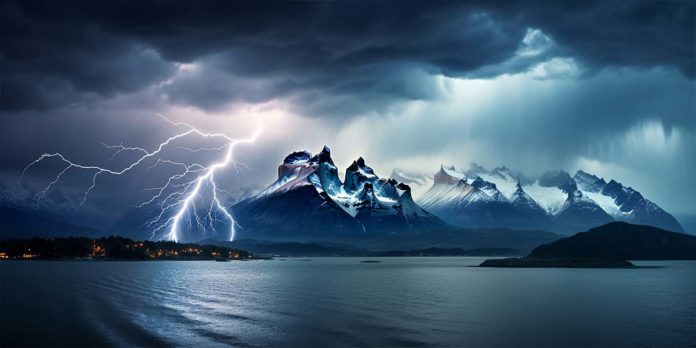In a world where the power of nature never ceases to astound us, few phenomena are as electrifying—literally—as lightning bolts. But did you know that not all lightning strikes are created equal?
Dive into the mysterious and exhilarating world of superbolts—nature’s most intense and rare lightning phenomena.
How does a lightning superbolt, a force so powerful and elusive, continue to captivate researchers across the globe?
Understanding the Rarity and Intensity of Superbolts
Lightning strikes inspire awe and respect. Yet, amidst the vast number of strikes that illuminate our skies, a tiny fraction stands out—superbolts. These lightning bolts are not your regular flashes.
As Scientific American reports, they can be up to a staggering 1,000 times more powerful than the ordinary strikes we’re familiar with. First observed in 1977, researchers were taken aback to find that these superbolts were not only 100 times more intense but also lasted twice as long as their ordinary counterparts.
Lightning Superbolts Have Location Preference
Intriguingly, superbolts don’t occur just anywhere. A 2019 study shone a light on the geographical puzzle of superbolts. Researchers found that these electrifying lightning strikes primarily concentrate in three distinct regions globally: the North Atlantic Ocean, the Mediterranean Sea, and the Altiplano in South America.
What’s even more fascinating is their timing and preference for location. Superbolts are more frequent from November to February and show a peculiar fondness for striking over water, in stark contrast to ordinary lightning strikes which predominantly hit land.
The Science Behind the Charge
Ever wondered how such powerful lightning strikes form? It all boils down to the internal mechanics of thunderstorms. When tiny ice crystals collide with graupel within turbulent storm clouds, an electric field emerges. As positively charged ice crystals ascend towards the top of the storm cloud, the heavier, negatively charged graupel sinks.
This dynamic sets the stage for an electrical showdown. As the opposing charges intensify, lightning is born. However, superbolts manifest when the charging zone in the cloud and Earth’s surface are closer than usual.
Drawing a parallel with everyday electronics, Avichay Efraim, a key researcher in the field, likens this process to the functioning of capacitors. When the charged plates in a capacitor are closely spaced, the electric field between them strengthens, becoming more conductive. He proposes that a similar mechanism might be at play within storm clouds, resulting in the formation of supercharged lightning superbolts.
Lightning Bolts Research Continues
As with any groundbreaking discovery, the findings about superbolts have stirred debate among the scientific community. Some experts argue that different types of lightning phenomena might be getting mixed up in measurements.
Additionally, the current theories don’t encompass superbolt occurrences across all regions. Efraim and his team aren’t resting on their laurels, though. They’re gearing up to delve deeper into the mysteries of superbolts, especially around the equator, in a bid to uncover more insights.
In our ever-evolving understanding of the world, the mysteries of superbolts remind us of the wondrous complexities of nature. Every flash of these intense lightning strikes reminds us of the immense power, beauty, and enigma that our world holds.
As researchers continue their investigative journey, one thing is clear: there’s still much to learn and discover about the electrifying world of lightning bolts.










